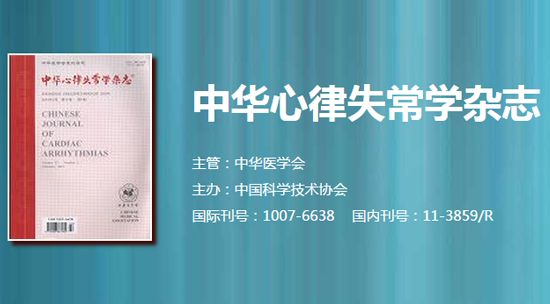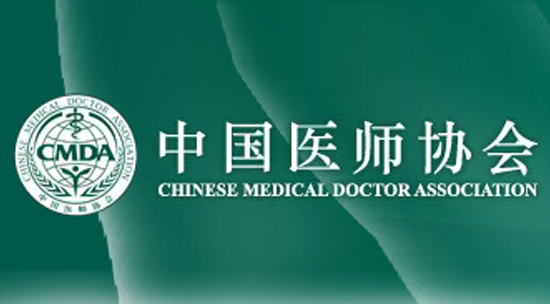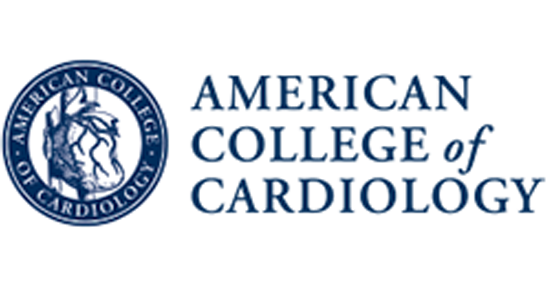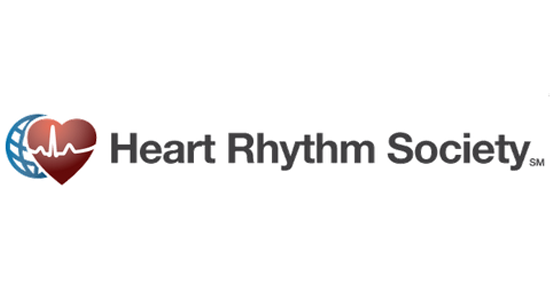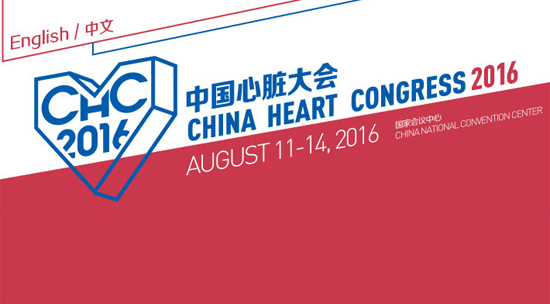HeartRhythm主编—陈鹏生教授语音速递(十二月刊 英文版)
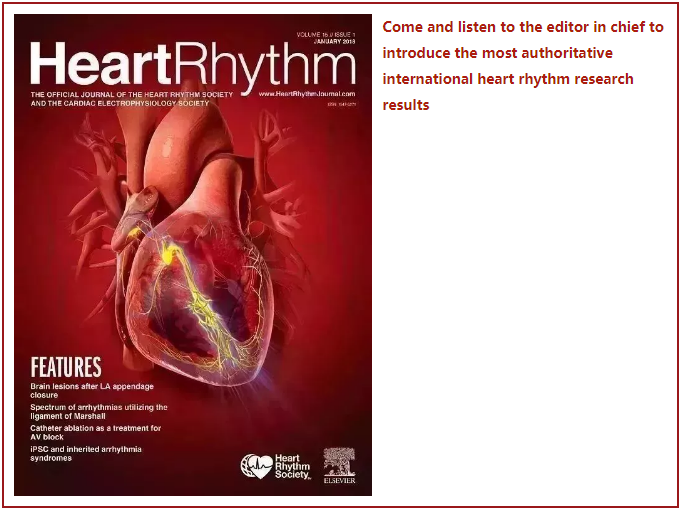

Peng-Sheng Chen
Hello, this is Dr. Peng-Sheng Chen, the Editor-in-Chief of Heart Rhythm. The December issue is a focus issue on Devices.
The first article is titled “Outcomes associated with pacemaker implantation following transcatheter aortic valve replacement: A nationwide cohort study”. The study was based on the administrative hospital discharge database in France from 2010 to 2019. Among 520,662 patients hospitalized for aortic stenosis, 49,201 were treated with TAVR. A total of 29,422 patients had follow-up ≥6 months (median 1.7 years), 22% already had PPM at baseline, and 22% underwent PPM within the first 30 days post-TAVR. The authors found that PPM at baseline and within 30 days post-TAVR are independently associated with higher mortality and HF hospitalization during follow-up.
The next one it titled “Permanent pacemaker implantation late after transcatheter aortic valve implantation”. In a prospective transcatheter aortic valve implantation (TAVI) registry, the authors identified 1059 patients discharged after TAVI without PPM. Among them, 62 patients (5.9%) underwent PPM implantation at a median of 305 days after discharge for TAVI. They found that PPM implantation late after TAVI is infrequent and is associated with clinical symptoms in half of patients. Impairment of AV conduction was the indication in three-quarters of patients. First-degree AV block and new LBBB after TAVI as well as valve-in-valve procedure during follow-up emerged as independent predictors.
Up next is “Three-year outcome after transcatheter aortic valve implantation: Comparison of a restrictive versus a liberal strategy for pacemaker implantation”. The purpose of this study was to compare medium-term outcomes between PPI implantation strategies. TAVI was performed in 884 patients at author’s center. Of these, 383 consecutive, pacemaker-naive patients underwent TAVI with the liberal PPI strategy and subsequently 384 with the restrictive strategy. The restrictive strategy significantly reduced the percentage of patients undergoing PPI before discharge. The incidence of the primary endpoint (all-cause-mortality and hospitalization for heart failure) after 3 years was similar in both groups as was all-cause-mortality. The authors conclude that a restrictive PPI strategy after TAVI reduces PPI significantly and is safe in medium-term follow-up over 3 years.
Coming up is “Long-term complications in patients implanted with subcutaneous implantable cardioverter-defibrillators: Real-world data from the extended ELISIR experience”. A total of 1254 patients implanted with an S-ICD from January 2015 to June 2020 were enrolled from a 19-institution European registry. The authors found that the overall complication rate over 23.2 months of follow-up in a multicenter S-ICD cohort was 9.3%. Early unanticipated device battery depletions occurred in 2.2% of patients, while lead fracture was observed in 0.3%, which is in line with the expected rates reported by Boston Scientific.
The next article is “Electrical abnormalities with St. Jude/Abbott pacing leads: A systematic review and meta-analysis”. The purpose of this study was to determine the malfunction rates of current pacemaker leads through meta-analysis. Eight studies with a total of 14,579 leads were included. Abbott accounted for 10,838 (74%), Medtronic 2510 (17%), Boston Scientific 849 (6%), and MicroPort 382 (3%) leads. The most common lead abnormality was lead noise with normal impedance. Abbott leads are associated with an increased risk of abnormalities compared with leads of other manufacturers, primarily manifesting as lead noise with normal impedance, and are associated with an increased risk of lead reprogramming and lead revision or extraction.
Coming up is “Subcutaneous implantable cardioverter-defibrillator and defibrillation testing: A propensity-matched pilot study”. Among 1290 patients, a total of 566 propensity-matched patients including 283 with defibrillation testing and 283 without defibrillation testing served as study population. Over median follow-up of 25.3 months, defibrillation testing performance was not associated with significant differences in cardiovascular mortality and ineffective shocks. The authors also found that the PRAETORIAN score is capable of correctly identifying a large percentage of patients at risk for ineffective shock conversion in both cohorts.
The next paper is “Infectious consequences of hematoma from cardiac implantable electronic device procedures and the role of the antibiotic envelope: A WRAP-IT trial analysis”. All 6800 study patients were included in this analysis. Among them, 3429 are control and 3371 received envelope. Acute hematoma incidence was 2.2% at 30 days, with no significant difference between treatment groups. Among control patients, hematoma carried a >11-fold risk of developing a major CIED infection. This risk was significantly mitigated with antibacterial envelope use, with an 82% reduction in major CIED infection among envelope patients who developed hematoma compared to control.
The following article is “Lower rate limit for pacing by cardiac resynchronization defibrillators: Should lower rate programming be reconsidered?” All dual-chamber CRT-D devices in the Remote Patient Monitoring ALTITUDE database (2006-2011) were queried. Data analyzed included 61,881 subjects. Lower rate limit ranged from 40 to 85 bpm. They found that lower low rate limit was associated with improved survival, with low rate limit 40 associated with the largest survival benefit. This was significant for all 3 heart rate score subgroups.
Up next is “Outcomes and periprocedural management of cardiac implantable electronic devices in patients with carcinoid heart disease”. A total of 27 patients with cumulative follow-up of 75 patient-years were included for analysis. The majority of implanted devices were dual-chamber permanent pacemakers (63%). Among all carcinoid heart disease patients who underwent any cardiac surgery, the incidence of CIED implantation was 12%. Median time from implant to death was 2.5 years, with 1-year mortality of 15%. These data suggest that CIED implantation can be performed relatively safely. Clinicians must be aware of the relevant carcinoid physiology and take appropriate precautions to mitigate risks.
The next article is “Tissues attached to retrieved leadless pacemakers: Histopathological evaluation of tissue composition in relation to implantation time and complications”. All 15 consecutive successful Nanostim leadless pacemaker retrievals in a tertiary center were included. Adherent tissue was present in 14 of 15 retrievals. The tissue consisted of fibrosis and thrombus, or thrombus only. In short-term retrievals (<1 year), mostly fresh thrombi without fibrosis were seen. In later retrievals, the tissue consisted of fibrosis often with organizing or lytic thrombi. These results suggest that fibrosis and thrombus adherent to leadless pacemakers are common and encapsulate the leadless pacemakers as seen in transvenous pacemakers. Leadless pacemakers may adhere to the tricuspid valve or subvalvular apparatus affecting retrieval safety. The end-of-life strategy should be optimized by incorporating risk stratification for excessive fibrotic encapsulation and adhesions.
Coming up is “Time to diagnosis of acute complications after cardiovascular implantable electronic device insertion and optimal timing of discharge within the first 24 hours”. The purpose of this study was to determine the precise timing of acute complication diagnosis after CIED implantation and optimal timing for same-day discharge. A total of 2421 patients underwent implantation. Most acute complications are diagnosed either within the first 6 hours or more than 24 hours after implantation. With rare exception, patients can be considered for discharge after 6 hours of appropriate monitoring.
In addition to papers related to devices, the journal also published non-device related papers. The first one is titled “Extracellular matrix remodeling precedes atrial fibrillation: Results of the PREDICT-AF trial”. The study included 150 patients without a history of AF with a CHA2DS2-VASc score of ≥2 at an increased risk of developing AF. The left atrial appendage was excised and blood samples were collected during elective cardiothoracic surgery for biomarker discovery. Participants were followed for 2 years with Holter monitoring to determine any atrial tachyarrhythmia after a 50-day blanking period. Eighteen patients (12%) developed incident AF. The biomarker analyses showed that atrial remodeling occurs long before incident AF and implies future potential for early patient identification and therapies to prevent AF.
The next paper is “Recommendations regarding cardiac stereotactic body radiotherapy for treatment refractory ventricular tachycardia”. The purpose of this study was to establish an expert consensus regarding the conduct and use of cardiac stereotactic body radiotherapy (CSBRT) for refractory VT. Results show that there was strong agreement regarding the experimental status of the procedure and the preference for treatment in clinical trials. CSBRT should be conducted at specialized centers with a strong expertise in the management of patients with ventricular arrhythmias and in stereotactic body radiotherapy for moving targets. CSBRT should be restricted to patients with refractory VT with optimal antiarrhythmic medication who underwent prior catheter ablation or have contraindications. Prospective trials and pooled registries are needed to gain further insight into this promising treatment option for patients with refractory VT.
Coming up is “Ventricular arrhythmias ablated successfully in the subvalvular interleaflet triangle between the right and left coronary cusps: Electrophysiological characteristics and catheter ablation”. The authors studied 28 ventricular arrhythmias (VAs) ablated successfully at the right-left subvalvular interleaflet triangle (R-L ILT) between right and left coronary cusps. Ninety-six percent of VAs had an early precordial electrocardiographic transition with high R-wave amplitude in lead V1. Earliest potential was recorded at the R-L ILT in 13 of 28 patients and the left pulmonary sinus cusp in 6 of 28 patients. Mapping the summit communicating vein failed because of anatomic or instrumental limitations in these 19 patients. The authors conclude that VAs ablated successfully at the R-L ILT have unique electrophysiological characteristics, and R-L ILT may be an endocardial anatomic ablation target for VAs originating from the base of the LV summit.
Next up is “Clinician needs and perceptions about cardioneuroablation for recurrent vasovagal syncope: An international clinician survey”. There is increasing interest in cardioneuroablation as a treatment of vasovagal syncope, despite no randomized clinical trial data. The authors conducted a survey in 118 physicians. The majority of respondents (79%) would consider referring a patient with refractory vasovagal syncope for cardioneuroablation. There is widespread support for well-designed randomized clinical trials to confirm the hypothesized clinical benefit of cardioneuroablation, provide data to guide the risk-benefit equations during patient selection, and appropriately estimate the placebo effect.
Coming up is “Intracellular uptake of agents that block the hERG channel can confound the assessment of QT interval prolongation and arrhythmic risk”. Oliceridine is a biased ligand at the μ-opioid receptor recently approved for the treatment of acute pain. In a thorough QT study, corrected QT (QTc) prolongation displayed peaks at 2.5 and 60 minutes after a supratherapeutic dose. The mean plasma concentration peaked at 5 minutes, declining rapidly thereafter. The purpose of this study was to examine the basis for the delayed effect of oliceridine to prolong the QTc interval in rabbit LV wedge preparations. The authors found that a gradual increase of intracellular access of drugs to the hERG channels as a result of their intracellular uptake and accumulation can significantly delay effects on repolarization, thus confounding the assessment of QT interval prolongation and arrhythmic risk when studied acutely. The multi-ion channel effects of oliceridine, late sodium channel current inhibition in particular, point to a low risk of developing torsades de pointes
The last original research article is titled “Inhibitory G-protein-mediated modulation of slow delayed rectifier potassium channels contributes to increased susceptibility to arrhythmogenesis in aging heart”. Slow delayed rectifier potassium current (IKs) is an important component of repolarization reserve during sympathetic nerve excitement. However, little is known about age-related functional changes of IKs and its involvement in age-dependent arrhythmogenesis. The authors found no difference in IKs density in ventricular cardiomyocytes between young and old guinea pigs. However, in contrast to IKs potentiation in young hearts, isoproterenol evoked an acute inhibition on IKs in a concentration-dependent manner in old guinea pig hearts. The β2AR antagonist, but not β1AR antagonist, reversed the inhibitory response. The authors conclude that βAR activation acutely induces an inhibitory IKs response in aging guinea pig hearts through β2AR-Gi signaling, which contributes to increased susceptibility to arrhythmogenesis in aging hearts.
The above original articles are followed by a Viewpoint article written by Dr Michel Haissaguerre titled “Towards radiofrequency catheter ablation of atrial fibrillation”. This article is the 12th and final entry in our series of articles to celebrate the 30th year of RF ablation.
I hope you enjoyed this podcast. For Heart Rhythm, I’m the Editor-In-Chief, Dr. Peng-Sheng Chen.
